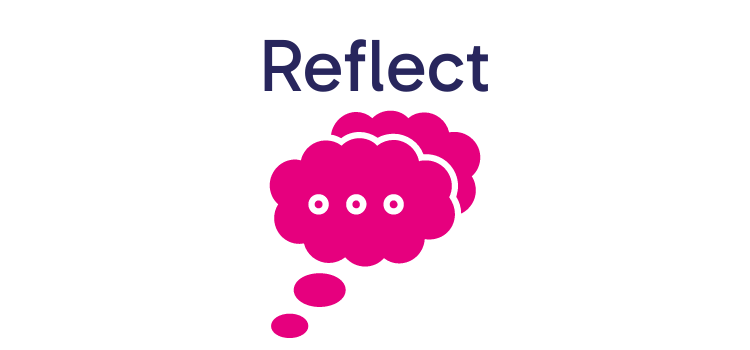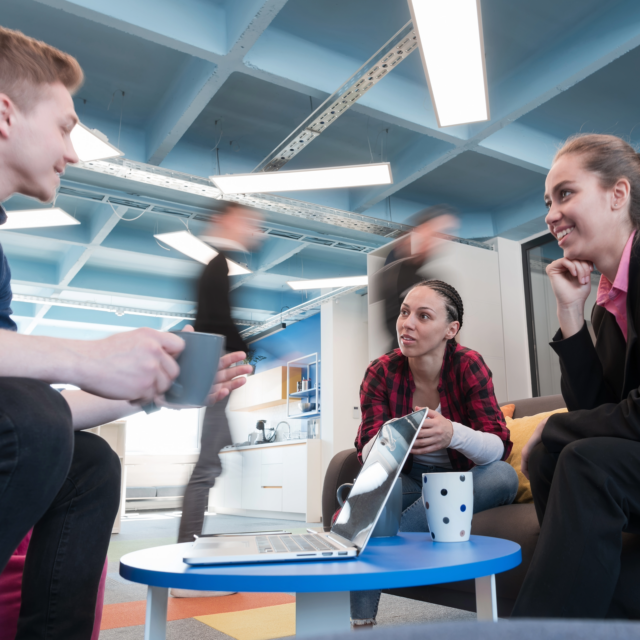
26 March 2024
Creating People First Workplaces
Workspaces are more than just physical locations where work gets done, they are dynamic environments that profoundly influence employee wellbeing. In this article, we explore the multifaceted impact of workspace design on employee health, productivity, engagement, and satisfaction. Through insights from our interview with Charlotte Simpkins from Bluespace LTD, we unveil key strategies for shaping work environments that prioritise employee wellbeing.

The Impact of Workspace Design on Employee Wellbeing
Bluespace emphasise that the modern office is a nexus of creativity, productivity, and community. A well designed workspace not only fosters comfort and satisfaction but also plays a pivotal role in encouraging employees to return to the office amidst the rise of remote work. Factors such as layout, lighting, ambience, and amenities are instrumental in shaping the work environment’s effect on wellbeing.
Physical Wellbeing
Ergonomic furniture, proper lighting, and good air quality are paramount for enhancing physical comfort and reducing health risks. Charlotte shares innovative approaches, such as incorporating exercise bikes instead of office chairs, to promote movement and wellbeing in the workplace.
Mental Wellbeing
Workspace design significantly impacts stress levels and mental clarity. Spaces that facilitate privacy and concentration help manage distractions, while well-designed breakout areas and communal spaces promote relaxation and social interaction, thereby enhancing mental wellbeing.
Productivity and Engagement
A thoughtfully designed workspace empowers employees to choose environments that suit their tasks and preferences, fostering autonomy and ownership. Employers can optimise layouts and incorporate features that facilitate collaboration and communication, ultimately fostering a sense of camaraderie and belonging within the organisation.
Strategies for Creating People First Workspaces
Charlotte from Bluespace suggests incorporating flexible workstations, access to nature, and maximising natural lighting to enhance productivity and satisfaction. Employers can demonstrate care for employee wellbeing by valuing and investing in well-designed workspaces that meet their physical and psychological needs.

Questions for Employers
To guide employers in evaluating their workspace design, we pose reflective questions addressing areas such as privacy, breakout spaces, flexibility, employee feedback, ambience, lighting, amenities, and colour psychology.
- Are there areas in the office where employees can work privately if needed?
- Do our current breakout spaces effectively promote relaxation and rejuvenation?
- How can we incorporate flexibility into the workspace to accommodate different work styles and preferences?
- Have we gathered feedback from employees regarding their preferences and needs in the workspace?
- How does the current office ambience contribute to employee morale and satisfaction?
- Are there any adjustments needed to enhance natural lighting and air quality?
- Are there any additional amenities or features that could support employee wellbeing and safety?
- How can we use colour psychology to create a more uplifting and positive environment?
Workspaces that prioritise employee wellbeing contribute to job satisfaction, retention, and a positive company culture. By implementing small changes informed by the principles outlined in this article, employers can create environments where employees thrive and accomplish great things.

Quick Summary
Charlotte’s insights highlight key elements for designing workspaces with employee wellbeing in mind:
1. Lighting – Natural light is crucial for boosting productivity and reducing eye strain. Implementing elements like mirrors and light-coloured walls can mimic natural light and enhance the workspace environment.
2. Ergonomic Furniture – Comfortable and supportive furniture is essential for maintaining concentration and task effectiveness, ensuring employees can work comfortably for extended periods.
3. Biophilic Design – Integrating natural elements such as plants into the workspace can significantly improve wellbeing and performance, connecting employees with nature and enhancing the overall atmosphere.
4. Open Plan Layout – An open plan layout encourages collaboration and idea sharing, fostering productivity and teamwork among employees by creating a dynamic and interactive work environment.
5. Colours and Branding – Effective use of colours and branding helps create the right atmosphere for both employees, contributing to a positive and engaging workspace environment.
Considering these elements along with other wellbeing solutions when designing workspaces can have a profound impact on employee wellbeing, both physically and mentally. By incorporating practical design strategies such as flexible workstations, access to nature, and gathering feedback from employees, employers can create a workspace that fosters productivity, satisfaction, and overall success.
Bluespace is passionate about creating contemporary office design for workplace interiors where staff will feel more productive, creative and inspired. For more information click here
Sign up to our newsletter to gain access to regular People First updates.




